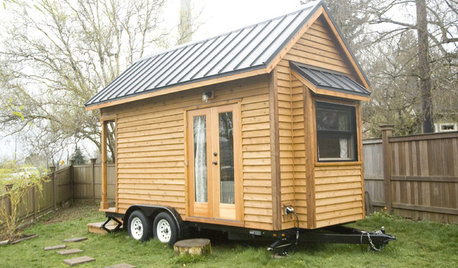Mobil-1 Racing 2T mixing ratio
rdaystrom
16 years ago
Related Stories

HOUZZ TOURSMy Houzz: Mobile Microliving in Oregon
A 128-square-foot home for a couple in Portland is designed for simplicity, affordability and beauty
Full Story
DECORATING PROJECTSDIY Project: Wallpaper Goes Mobile
Paper Plywood Panels for a Great Look That Can Move When You Do
Full Story
DECORATING GUIDESA Mobile Home Gets a Bohemian-Chic Makeover
Designer infuses world traveler’s guesthouse with tribal textiles, Moroccan tiles and kilim rugs
Full Story
ARTFrom the Artist: How to Make a Real Mobile
It’s all in the balancing points: A top mobile designer shows how to create a Calder-inspired installation of your own
Full Story
HOME TECHThe Future of Home Automation: Cheap, Wearable and Mobile!
Look for smart watches and glasses that can control your smart-phone apps, which in turn automate your home equipment
Full Story
FUN HOUZZBuckle Up for a Modern Mobile Cabin in a Bus
See an innovative off-the-grid living space designed by an architecture student — with room for 6 and a sunbathing spot
Full Story
HOUZZ TOURSMy Houzz: Vintage and Asian Styles Mix in Eclectic Home
An interior design couple dress up their home with origami pendant, wallpaper and mid-century pieces
Full Story0

DECORATING GUIDESThe Secret Formula for Perfect Pillow Arrangements
For a polished look on sofas and beds every time, keep this simple ratio for pillow arranging in mind
Full Story
LANDSCAPE DESIGNInside Houzz: Divine Proportions Make for a Dream Landscape
Spirals based on the golden ratio give a Washington yard out-of-this-world appeal, at the hands of a designer found on Houzz
Full Story
MOST POPULARFalling for Color: 9 Ways With Pumpkin Orange
From racing stripes to accent walls, see how to work this vibrant hue into your home
Full Story



weshorn
echoman
Related Discussions
Mobil 2T Mixmaster
Q
gas to oil ratio
Q
Mobil 2-T
Q
HAVE: sase/trade seed offer: 4 tomatoes, 3 t2t~1 hybrid +veggies
Q
Mike72
echoman
Mike72
mtgrs737
lawnboystu
echoman
lawnboystu
echoman
lawnboystu
echoman
Mike72
echoman
lawnboystu
weed_cutter
rdaystromOriginal Author
Mike72
mattv21